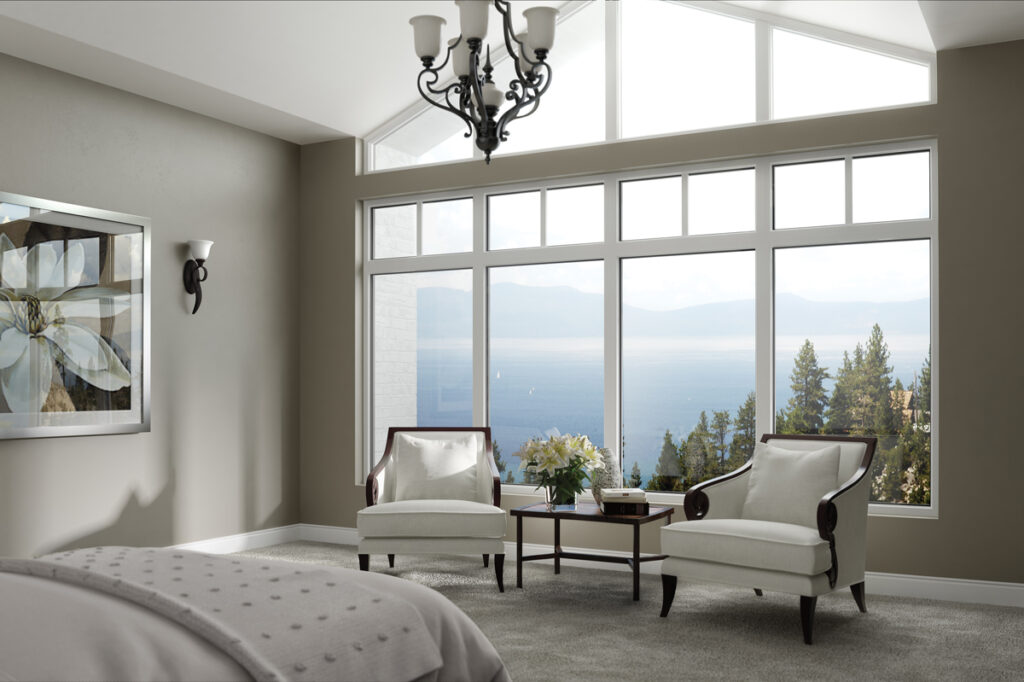
Discovering Smart Innovations in Window Technology
Imagine waking up one morning because the sun is in your eyes. Instead of having to get out of bed to close the curtains, you can use your voice or your cellphone to tell your window to change from clear glass to a dark tint that blocks the troublesome rays. It’s a major convenience factor that could also have significant implications for energy efficiency, your utility bill, and the environment. After all, changes in the amount of sun allowed through the window can do more than alter the amount of light in the room. It can help with temperature control, which has a direct impact on your energy usage. Altering glass can also impact privacy.
As HGTV explains, there are four types of switchable glazings:
-
- Electrochromic: A complex assembly featuring layers of ionic conductors, counter electrodes, and electronic conductors is placed between the two layers of a standard insulated glass window unit. When a switch is flipped, electric current moves through the assembly, and the window can transform anywhere from clear to dark. Reversing the voltage reverses the change. Electricity is only needed to make a change; no power is required to maintain the change. However, an electrician would be needed to install the window.
-
- Photochromic: Like the glasses that automatically darken when worn in the sun, windows with this technology are designed to respond to changes in the light. Unfortunately, it has yet to be successfully deployed on large, window-sized pieces of glass.
-
- Thermochromic: The change in these smart windows is driven by heat. While various methods are being studied, the current leader is gel. In fact, a few gel-based coatings are commercially available. They can prompt windows to change from clear to diffused to white and reflective.
-
- Liquid crystal: Liquid crystal were the first smart windows to be commercially available. However, they couldn’t assist with energy savings. Their goal was privacy. With this technology, layers of heat-treated glass surround two thin films, which encase liquid crystals. The films are covered with a transparent conductive metal coating. When off, the glass is white. When on, the crystals line up, and the glass clears. Roughly the same amount of heat and light passes through the glass in either setting, so they aren’t helpful with efficiency issues.
This technology sounds useful, so why hasn’t it made its way into stores, businesses, and homes? As Smithsonian Magazine points out, it’s a matter of economics. While there are some limited products available on a small scale, most smart window technology is too expensive for the average consumer. Scientists continue to refine the tech, so experts hope that advances will make it more affordable soon.
Exploring Existing Window Technology for Efficiency
While switchable glazings may not be coming to a store near you quite yet, there are window technologies on the market already that can help boost energy efficiency. As Energy.gov explains, these include all the following:
-
- Glazings: Double or triple glazing is generally standard.
-
- Gas fills: An inert gas, usually argon or krypton, is used to fill the space between glazing layers. It minimizes heat transfer and provides insulation.
-
- Coatings: Spectrally selective coatings allow in the full range of light while keeping out 40 to 70 percent of the solar heat. Low-e coatings lower U-factors, control heat transfer, and manage solar heat gain and daylight transmittance.
Selecting the right window can be tricky. With technology, aesthetics, and budgets to consider, there’s a lot to think about. How do you find a product with the look and features you want and the ability to deliver the best value and performance? Working with a reliable window expert can help. At American Window Company, we’re ready to assist you in locating the right product for your home and budget, and we can help you explore recent innovations in window technology too. To get started, contact us today.



